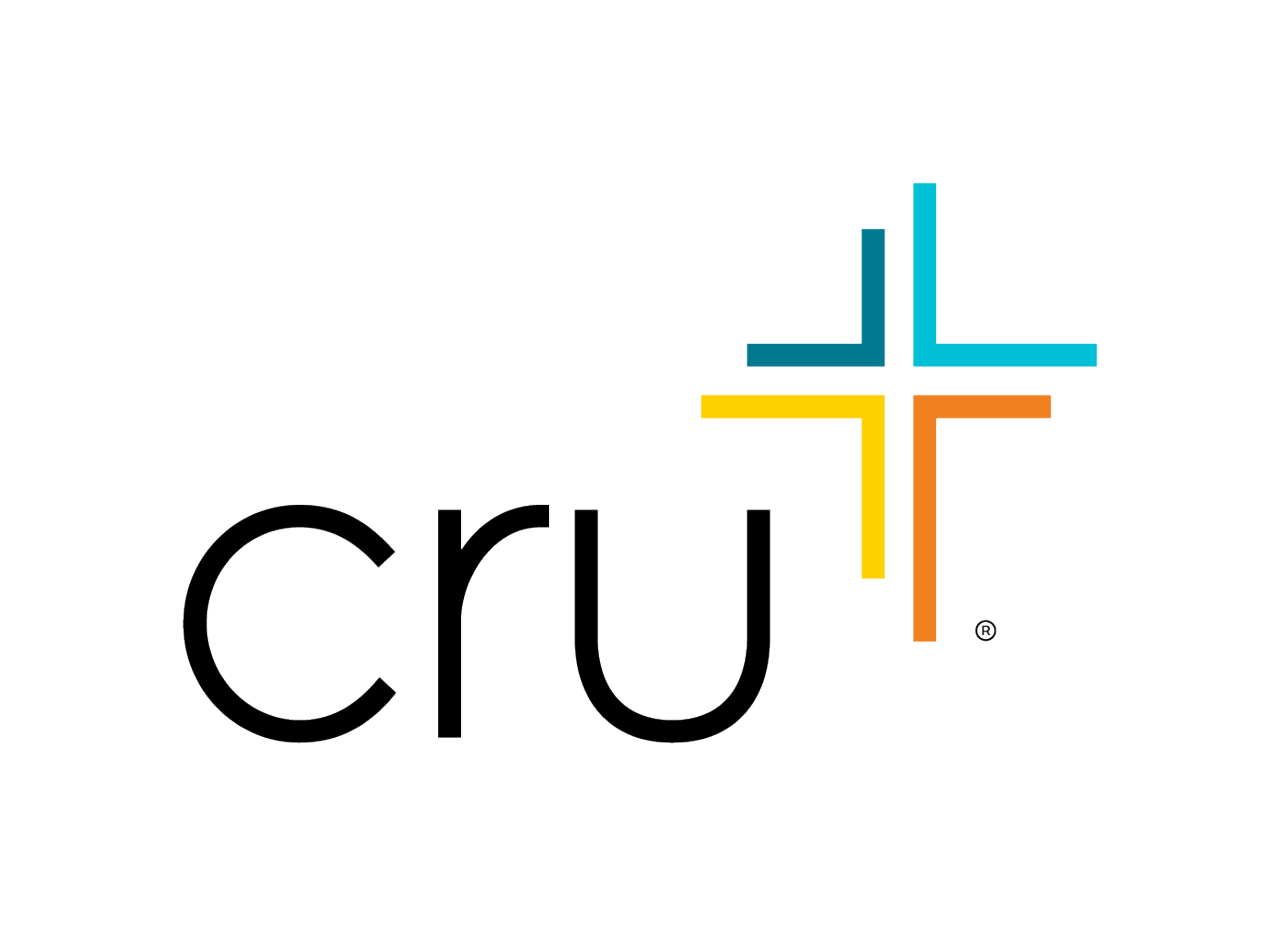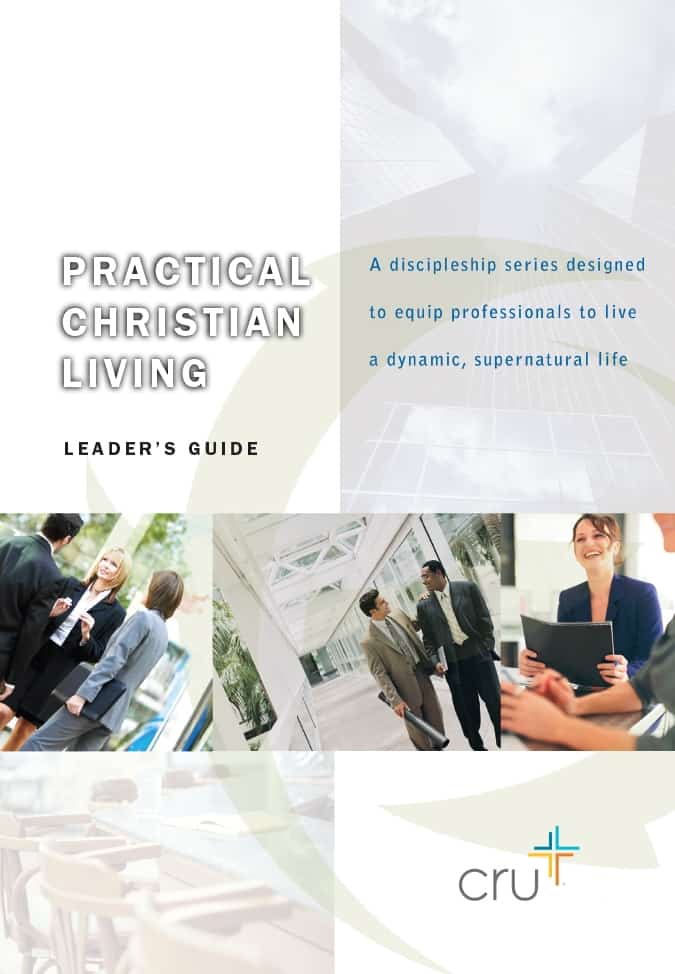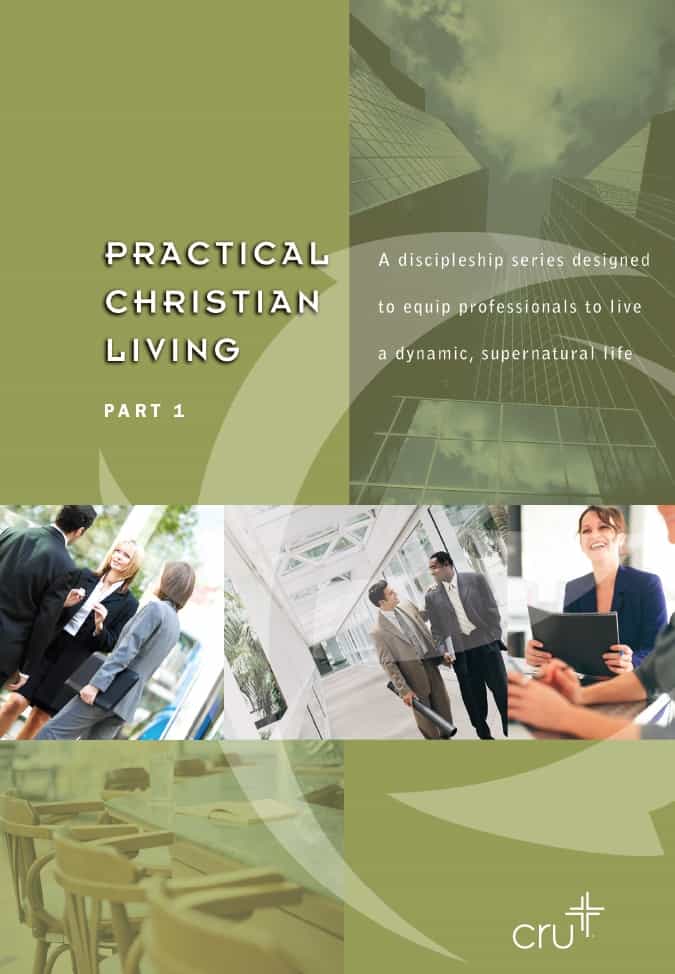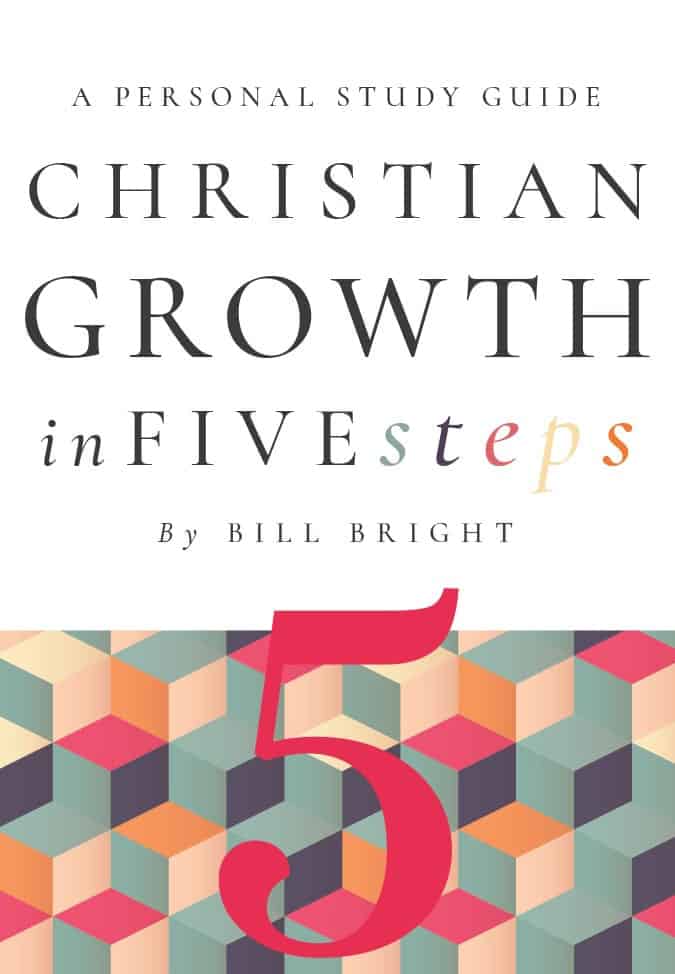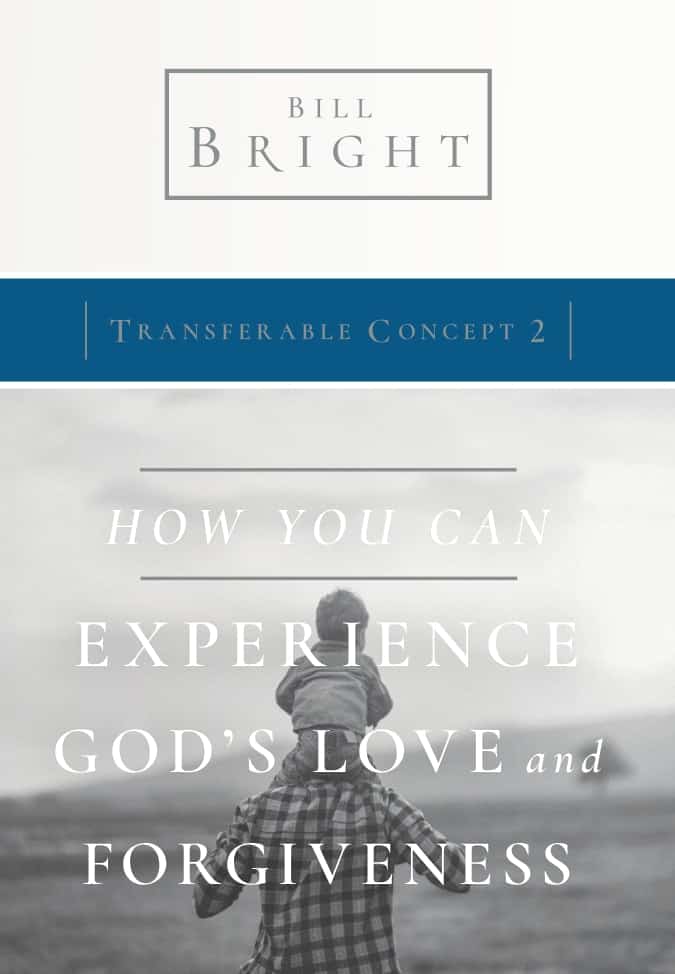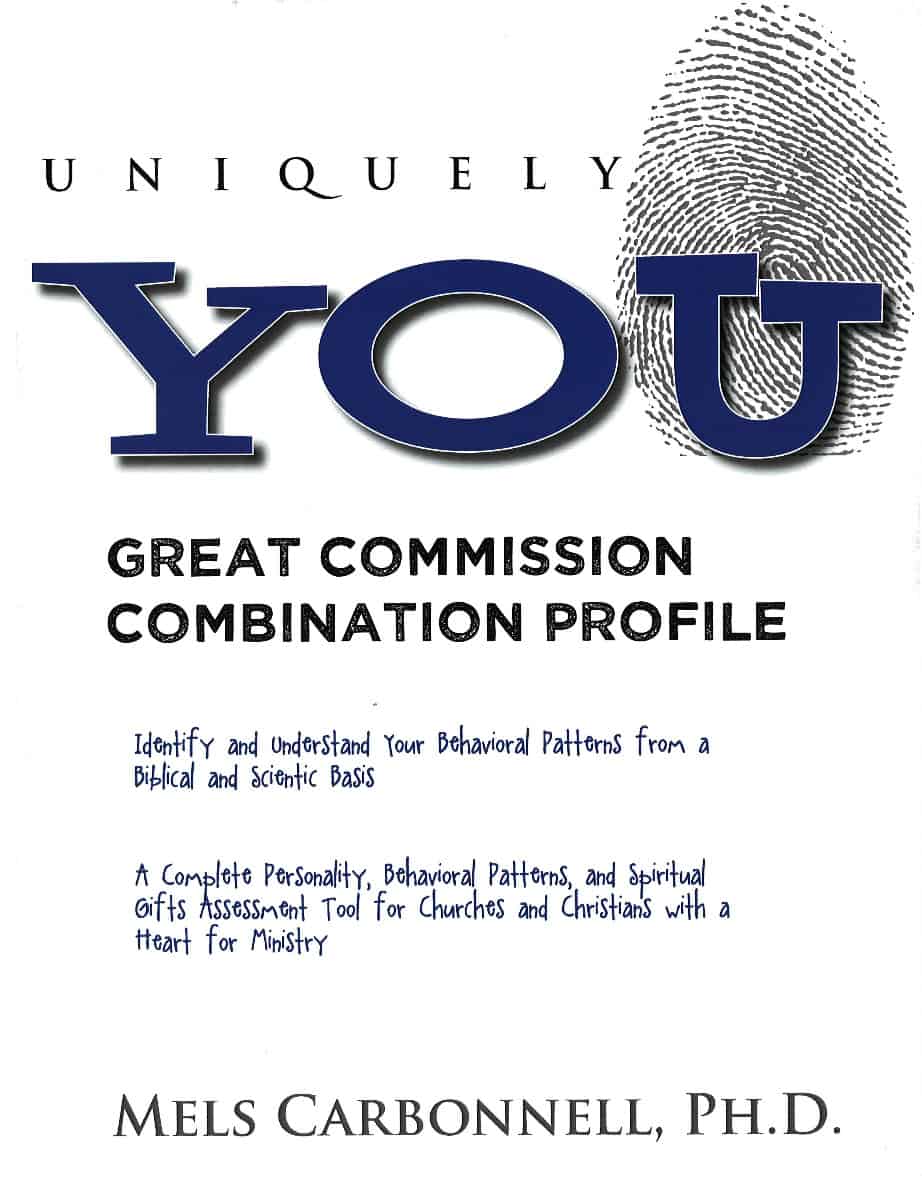History of the Parachurch
aka THE TWO STRUCTURES OF GOD'S REDEMPTIVE MISSION
It is the thesis of this article that whether Christianity takes on Western or Asian form, there will still be two basic kinds of structures that will make up the movement. Most of the emphasis will be placed on pointing out the existence of these two structures as they have continuously appeared across the centuries. This will serve to define, illustrate, and compare their nature and importance. The writer will also endeavor to explain why he believes our efforts today in any part of the world will be most effective only if both of these two structures are fully and properly involved and supportive of each other.
Redemptive Structures in New Testament TimesFirst of all, let us recognize the structure so fondly called “the New Testament Church” as basically a Christian synagogue.1 Paul’s missionary work consisted primarily of going to synagogues scattered across the Roman Empire, beginning in Asia Minor, and making clear to the Jewish and Gentile believers in those synagogues that the Messiah had come in Jesus Christ, the Son of God; that in Christ a final authority even greater than Moses existed; and that this made more understandable than ever the welcoming of the Gentiles without forcing upon them any literal cultural adaptation to the ritual provisions of the Mosaic Law. An outward novelty of Paul’s work was the development, eventually, of wholly new synagogues that were not only Christian, but Greek.
Very few Christians, casually reading the New Testament (and with only the New Testament available to them), would surmise the degree to which there had been Jewish evangelists who went before Paul all over the Roman Empire—a movement that began 100 years before Christ. Some of these were the people whom Jesus himself described as “traversing land and sea to make a single proselyte.” Saul followed their path; Paul built on their efforts and went beyond them with the new gospel he preached, which allowed the Greeks to remain Greeks, and not be circumcised and culturally assimilated into the Jewish way of life. Paul had a vast foundation on which to build: Peter declared, “Moses is preached in every city (of the Roman Empire)” (Acts 15:21).
Yet not only did Paul apparently go to every existing synagogue of Asia,2 after which he declared, “...all Asia has heard the gospel,” but, when occasion demanded, he established brand new synagogue-type fellowships of believers as the basic unit of his missionary activity. The first structure in the New Testament scene is thus what is often called the New Testament Church. It was essentially built along Jewish synagogue lines,3 embracing the community of the faithful in any given place. The defining characteristic of this structure is that it included old and young, male and female. Note, too, that Paul was willing to build such fellowships out of former Jews as well as non-Jewish Greeks.
There is a second, quite different structure in the New Testament context. While we know very little about the structure of the evangelistic outreach within which pre-Pauline Jewish proselytizers worked, we do know, as already mentioned, that they operated all over the Roman Empire. It would be surprising if Paul didn’t follow somewhat the same procedures. And we know a great deal more about the way Paul operated. He was, true enough, sent out by the church in Antioch. But once away from Antioch, he seemed very much on his own. The little team he formed was economically self-sufficient when occasion demanded. It was also dependent, from time-to-time, not only upon the Antioch church, but upon other churches that had risen as a result of evangelistic labors. Paul’s team may certainly be considered a structure. While its design and form is not made concrete for us on the basis of remaining documents, neither, of course, is the structure of a New Testament congregation defined concretely for us in the pages of the New Testament. In both cases, the absence of any such definition implies the preexistence of a commonly understood pattern of relationship, whether in the case of the congregational structure, or the missionary band structure, which Paul employed earlier as Saul, the Pharisee, and later, at the time the Antioch congregation in Acts 13:2 released Paul and Barnabas for missionary work.
TRAININGThus, on the one hand, the structure we call the New Testament church is a prototype of all subsequent Christian fellowships where old and young, male and female are gathered together as normal biological families in aggregate. On the other hand, Paul’s missionary band can be considered a prototype of all subsequent missionary endeavors organized out of workers who affiliated themselves as a second decision, beyond membership, in the first structure.
Note well the additional commitment. Note also that the structure that resulted was something definitely more than the extended outreach of the Antioch church. No matter what we think the structure was, we know that it was not simply the Antioch church operating at a distance from its home base. It was something else, something different. We will consider the missionary band, the second of the two redemptive structures in New Testament times.
In conclusion, it is very important to note that neither of these two structures was, as it were, “let down from heaven” in a special way. It may be shocking at first to think that God made use of either a Jewish synagogue pattern or a Jewish evangelistic pattern. But this must not be more surprising than the fact that God employed the use of the pagan Greek language, the Holy Spirit guiding the biblical writers to lay hold of such terms as “kurios” (originally a pagan term), and pound them into shape to carry the Christian revelation. The New Testament refers to a synagogue dedicated to Satan, but this did not mean that Christians, to avoid such a pattern, could not fellowship together in the synagogue pattern. These considerations prepare us for what comes next in the history of the expansion of the gospel, because we see other patterns chosen by Christians at a later date whose origins are just as clearly “borrowed patterns” as were those in the New Testament period.
In fact, the profound missiological implication of all this is that the New Testament is trying to show us how to borrow effective patterns; it is trying to free all future missionaries from the need to follow the precise forms of the Jewish synagogue and Jewish missionary band, and yet to allow them to use comparable indigenous structures in the countless new situations across history and around the world—structures which will correspond faithfully to the function of patterns Paul employed, if not their form! It is no wonder that a considerable body of literature in the field of missiology today underlies the fact that world Christianity has generally employed the various existing languages and cultures of the world-human community—more so than any other religion—and in so doing, has cast into a shadow, all efforts to canonize as universal, any kind of mechanically formal extension of the New Testament church—which is “the people of God,” however those individuals are organized. As Kraft has said earlier, we seek dynamic equivalence, not formal replication.4
The Early Development of Christian Structures within Roman CultureWe have seen how the Christian movement built itself upon two different kinds of structures that had pre-existed in the Jewish cultural tradition. It is now our task to see if the functional equivalents of these same two structures were to appear in later Christian cultural traditions as the gospel invaded that larger world.
Of course, the original synagogue pattern persisted as a Christian structure for some time. Rivalry between Christians and Jews, however, tended to defeat this as a Christian pattern, and in some cases to force it out of existence, especially where it was possible for Jewish congregations of the dispersion to arouse public persecution of the apparently deviant Christian synagogues. Unlike the Jews, Christians had no official license for their alternative to the Roman Imperial cult.5 Thus, whereas each synagogue was considerably independent of the others, the Christian pattern was soon assimilated to the Roman context, and bishops became invested with authority over more than one congregation with a territorial jurisdiction not altogether different from the pattern of Roman civil government. This tendency is well confirmed by the time the official recognition of Christianity had its full impact: the very Latin word for Roman magisterial territories was appropriated—the diocese—within which parishes are to be found on the local level.
In any case, while the more “congregational” pattern of the independent synagogue became pervasively replaced by a “connectional” Roman pattern, the new Christian parish church still preserved the basic constituency of the synagogue, namely, the combination of old and young, male and female—that is, a biologically perpetuating organism.
Meanwhile, the monastic tradition in various early forms developed as a second structure. This new, widely proliferating structure undoubtedly had no connection at all with the missionary band in which Paul was involved. Indeed, it more substantially drew from Roman military structure than from any other single source. Pachomius, a former military man, gained 3,000 followers and attracted the attention of people like Basil of Caesarea, and then through Basil, John Cassian, who labored in southern Gaul at a later date.6 These men thus carried forward a disciplined structure, borrowed primarily from the military, which allowed nominal Christians to make a second-level choice—an additional specific commitment.
Perhaps it would be well to pause here for a moment. Any reference to the monasteries gives Protestants culture shock. The Protestant Reformation fought desperately against certain degraded conditions at the very end of the 1000-year Medieval period. We have no desire to deny the fact that conditions in monasteries were not always ideal; what the average Protestant knows about monasteries may be correct for certain situations; but the popular Protestant stereotype surely cannot describe correctly all that happened during the 1000 years! During those centuries there were many different eras and epochs and a wide variety of monastic movements, radically different from each other, as we shall see in a minute; and any generalization about so vast a phenomenon is bound to be simply an unreliable, and no doubt prejudiced, caricature.
Let me give just one example of how far wrong our Protestant stereotypes can be. We often hear that the monks “fled the world.” Compare that idea with this description by a Baptist missionary scholar:
The Benedictine rule, and the many derived from it, probably helped to give dignity to labor, including manual labor in the fields. This was in striking contrast with the aristocratic conviction of the servile status of manual work which prevailed in much of ancient society and which was also the attitude of the warriors and non-monastic ecclesiastics who constituted the upper middle classes of the Middle Ages.... To the monasteries...was obviously due much clearing of land and improvement in methods of agriculture. In the midst of barbarism, the monasteries were centres of orderly and settled life and monks were assigned the duty of road-building and road repair. Until the rise of the towns in the eleventh century, they were pioneers in industry and commerce. The shops of the monasteries preserved the industries of Roman times.... The earliest use of marlin improving the soil is attributed to them. The great French monastic orders led in the agricultural colonization of Western Europe. Especially did the Cistercians make their houses centres of agriculture and contribute to improvements in that occupa- tion. With their lay brothers and their hired laborers, they became great landed proprietors. In Hungary and on the German frontier, the Cistercians were particularly important in reducing the soil to cultivation and in furthering colonization. In Poland, too, the German monasteries set advanced standards in agriculture and introduced artisans and craftsmen. 7
For all of us who are interested in missions, the shattering of the “monks fled the world” stereotype is even more dramatically and decisively reinforced by the magnificent record of the Irish peregrini, who were Celtic monks who did more to reach out to convert Anglo-Saxons than did Augustine’s later mission from the South, and who contributed more to the evangelization of Western Europe, even Central Europe, than any other force.
From its very inception, this second kind of structure was highly significant to the growth and development of the Christian movement. Even though Protestants have an inbuilt prejudice against it for various reasons, as we have seen, there is no denying the fact that apart from this structure it would be hard even to imagine the vital continuity of the Christian tradition across the centuries. Protestants are equally dismayed by the other structure—the parish and diocesan structure. It is, in fact, the relative weakness and nominality of the diocesan structure that makes the monastic structure so significant. Men like Jerome and Augustine, for example, are thought of by Protestants not as monks but as great scholars; and people like John Calvin lean very heavily upon writings produced by such monks. But Protestants do not usually give any credit to the specific structure within which Jerome and Augustine and many other monastic scholars worked, a structure without which Protestant labors would have had very little to build on, not even a Bible.
We now follow these threads into the next period, where we will see the formal emergence of the major monastic structures. It is sufficient at this point merely to note that there are already by the fourth century two very different kinds of structures—the diocese and the monastery—both of them significant in the transmission and expansion of Christianity. They are each patterns borrowed from the cultural context of their time, just as were the earlier Christian synagogue and missionary band.
It is even more important, for our purpose here, to note that while these two structures are formally different from—and historically unrelated to—the two in New Testament times, they are nevertheless functionally the same. In order to speak conveniently about the continuing similarities in function, let us now call the synagogue and diocese “modalities,” and the missionary band and monastery “sodalities.” Elsewhere, I have developed these terms in detail, but briefly, a modality is a structured fellowship in which there is no distinction of sex or age, while a sodality is a structured fellowship in which mem- bership involves an adult second decision beyond modality membership, and is limited by either age or sex or marital status. In this use of these terms, both the denomination and the local congregation are modalities, while a mission agency or a local men’s club are sodalities. A secular parallel would be that of a town (modality) compared to a private business (sodality)—perhaps a chain of stores found in many towns. The sodalities are subject to the authority of the more general structures, usually. They are “regulated” but not “administered” by the modalities. A complete state socialism exists where there are no regulated, decentralized, private initiatives. Some denominational traditions, like the Roman and the Anglican, allow for such initiatives. Many Protestant denominations, taking their cue from Luther’s rejection of the sodalities of his time, try to govern everything from a denominational office. Some local congregations cannot understand the value of the need for mission structures. Paul was “sent off” not “sent out” by the Antioch congregation. He may have reported back to it, but did not take orders from it. His mission band (sodality) had all the autonomy and authority of a “traveling congregation.”
In the early period beyond the pages of the Bible, however, there was little relation between modality and sodality, while in Paul’s time, his missionary band specifically nourished the congregations—a most significant symbiosis. We shall now see how the medieval period essentially recovered the healthy New Testament relationship between modality and sodality.
The Medieval Synthesis of Modality and SodalityWe can say that the Medieval period began when the Roman Empire in the West started to break down. To some extent, the diocesan pattern, following as it did the Roman civil governmental pattern, tended to break down at the same time. The monastic (or sodality) pattern turned out to be much more durable, and as a result gained greater importance in the early Medieval period than it might have otherwise. The survival of the modality (diocesan Christianity) was further compromised by the fact that the invaders of this early Medieval period generally belonged to a different brand of Christian belief—they were Arians. As a result, in many places there were both “Arian” and “Catholic” Christian churches on opposite corners of a main street—something like today, where we have Methodist and Presbyterian churches across the street from each other.
Again, however, it is not our purpose to downplay the significance of the parish or diocesan form of Christianity, but simply to point out that during this early period of the Medieval epoch, the specialized house called the monastery, or its equivalent, became ever so much more important in the perpetuation of the Christian movement than was the organized system of parishes, which we often call the church, as if there were no other structure making up the church.
Perhaps the most outstanding illustration in the early Medieval period of the importance of the relationship between modality and sodality, is the collaboration between Gregory the Great, and a man later called Augustine of Canterbury. While Gregory, as the bishop of the diocese of Rome, was the head of a modality, both he and Augustine were the products of monastic houses—a fact which reflects the dominance, even then, of the sodality pattern of Christian structure. In any case, Gregory called upon his friend Augustine to undertake a major mission to England, in order to try to plant a diocesan structure there, where Celtic Christianity had been deeply wounded by the invasion of Saxon warriors from the continent.
As strong as Gregory was in his own diocese, he simply had no structure to call upon to reach out in this intended mission other than the sodality, which at this point in history took the form of a Benedictine monastery. This is why he ended up ask- ing Augustine, and a group of other members of the same monastery, to undertake this rather dangerous journey and important mission on his behalf. The purpose of the mission, curiously, was not to extend the Benedictine form of monasticism. The remnant of the Celtic “church” in England, was itself a network of sodalities, since there were no parish systems in the Celtic area. No, Augustine went to England to establish diocesan Christianity, though he himself was not a diocesan priest. Interestingly enough, the Benedictine “Rule” (way of life) was so attractive, that gradually, virtually all of the Celtic houses adopted the Benedictine Rule, or “Regula” (in Latin).
This is quite characteristic. During a lengthy period of time, perhaps a thousand years, the building and rebuilding of the modalities was mainly the work of the sodalities. That is to say the monasteries were uniformly the source and the real focal point of new energy and vitality which flowed into the diocesan side of the Christian movement. We think of the momentous Cluny reform, then the Cistercians, then the Friars, and finally the Jesuits—all of them strictly sodalities, but sodalities which contributed massively to the building and the rebuilding of the Corpus Cristianum, the network of dioceses, which Protestants often identify as “the” Christian movement.
At many points, there was rivalry between these two structures, between bishop and abbot, diocese and monastery, modality and sodality, but the great achievement of the Medieval period is the ultimate synthesis, delicately achieved, whereby Catholic orders were able to function along with Catholic parishes and dioceses, without the two structures conflicting with each other to the point of a setback to the movement. The harmony between the modality and the sodality achieved by the Roman Church, is perhaps the most significant characteristic of this phase of the world Christian movement, and continues to be Rome’s greatest organizational advantage to this day.
Note, however, that is not our intention to claim that any one organization, whether modality or sodality, was continuously the champion of vitality and vigor throughout the thousands of years of the Medieval epoch. As a matter of fact, there really is no very impressive organizational continuity in the Christian movement, either in the form of modality or sodality. (The list of bishops at Rome is at many points a most shaky construct and unfortunately does not even provide a focus for the entire Christian movement.) On the other hand, it is clear that the sodality, as it was recreated again and again by different leaders, was almost always the structural prime mover, the source of inspiration and renewal which overflowed into the papacy and created the reform movements which blessed diocesan Christianity from time to time. The most significant instance of this is the accession to the papal throne of Hildebrand (Gregory VII), who brought the ideals, commitment, and discipline of the monastic movement right into the Vatican itself. In this sense, are not then the papacy, the College of Cardinals, the diocese, and the parish structure of the Roman Church, in some respects a secondary element, a derivation from the monastic tradition, rather than vice versa? In any case, it seems appropriate that the priests of the monastic tradition are called regular priests, while the priests of the diocese and parish are called secular priests. The former are voluntarily bound by a regula, while the latter as a group were other than, outside of (“cut off”) or somehow less than, the second-decision communities bound by a demanding way of life—a regula. Whenever a house or project or parish run by the regular clergy is brought under the domination of the secular clergy, this is a form of the “secularization” of that entity. In the lengthy “Investiture Controversy,” the regular clergy finally gained clear authority for at least semi-autonomous operation, and the secularization of the orders was averted.
We may note that the same structural danger of secularization exists today whenever the special concerns of an elite mission sodality fall under the complete domination (e.g. administration, not just regulation) of an ecclesiastical government, since the Christian modalities (congregations) inevitably represent the much broader and, no doubt, mainly inward concerns of a large body of all kinds of Christians, who, as “first decision” members, are generally less select. Their democratic majority tends to move away from the high-discipline of the mission structures, and denominational mission budgets tend to get smaller across the decades, as the church membership “broadens.”
We cannot leave the medieval period without referring to the many unofficial and often persecuted movements which also mark the era. In all of this, the Bible itself seems always the ultimate prime mover, as we see in the case of Peter Waldo. His work stands as a powerful demonstration of the simple power of a vernacular translation of the Bible where the people were unable to appreciate either Jerome’s classical translation, or the celebration of the Mass in Latin. A large number of groups referred to as “Anabaptists” are to be found in many parts of Europe. One of the chief characteristics of these renewal movements is that they did not attempt to elicit merely celibate participation, although this was one of their traits on occasion, but often simply developed whole “new communities” of believers and their families, attempting by biological and cultural trans- mission to preserve a high and enlightened form of Christianity. These groups usually faced such strong opposition and grave limitations, that it would be very unfair to judge their virility by their progress. It is important to note, however, that the average Mennonite or Salvation Army community, where whole families are members, typified the desire for a “pure” church, or what is often called a “believers” church, and constitutes a most significant experiment in Christian structure. Such a structure stands, in a certain sense, midway between a modality and a sodality, since it has the constituency of the modality (involving full families) and yet, in its earlier years, may have the vitality and selectivity of a sodality. We will return to this phenomenon in the next section.
We have space here only to point out that in terms of the durability and quality of the Christian faith, the 1000-year Medieval period is virtually impossible to account for, apart from the role of the sodalities. What happened in the city of Rome is merely the tip of the iceberg at best, and represents a rather superficial and political level. It is quite a contrast to the foundational well-springs of biblical study, and radical obedience represented by the various sodalities of this momentous millennium, which almost always arise somewhere else, and were often opposed by the Roman hierarchy.
The Protestant Recovery of the SodalityThe Protestant movement started out by attempting to do without any kind of sodality structure. Martin Luther had been discontented with the apparent polarization between the vitality he eventually discovered in his own order and the very nominal parish life of his time. Being dissatisfied with this contrast, he abandoned the sodality (in which, nevertheless, he was introduced to the Bible, to the Pauline epistles, and to teaching on “justification by faith”), and took advantage of the political forces of his time to launch a full-scale renewal movement on the general level of church life. At first, he even tried to do with- out the characteristically Roman diocesan structure which to a considerable extent represented the readoption of the Roman diocesan tradition. But the Lutheran movement did not, in a comparable sense, readopt the sodalities, the Catholic orders, that had been so prominent in the Roman tradition.
This omission, in my evaluation, represents the greatest error of the Reformation and the greatest weakness of the resulting Protestant tradition. Had it not been for the so-called Pietist movement, the Protestants would have been totally devoid of any organized renewing structures within their tradition. The Pietist tradition, in every new emergence of its force, was very definitely a sodality, inasmuch as it was a case of adults meeting together and committing themselves to new beginnings and higher goals as Christians without conflicting with the stated meetings of the existing church. This phenomenon of sodality nourishing modality is prominent in the case of the early work of John Wesley. He absolutely prohibited any abandonment of the parish churches. A contemporary example is the widely influential so-called East African Revival, which has now involved a million people, but has very carefully avoided any clash with the functioning of local churches. The churches that have not fought against this movement have been greatly blessed by it.
However, the Pietist movement, along with the Anabaptist new communities, eventually dropped back to the level of biological growth; it reverted to the ordinary pattern of congregational life. It reverted from the level of the sodality to the level of the modality, and in most cases, rather soon became ineffective, either as a mission structure, or as a renewing force.
What interests us most is the fact that in failing to exploit the power of the sodality, the Protestants had no mechanism for missions for almost three hundred years, until William Carey’s famous book, An Enquiry, proposed “the use of means for the conversion of the heathen.” His key word refers specifically to the need for a sodality, for the organized but non-ecclesiastical initiative of the warmhearted. Thus, the resulting Baptist Missionary Society is one of the most significant organizational developments in the Protestant tradition. Although not the earliest such society, reinforced as it was by the later stages of the powerful “Evangelical Awakening,” and by the printing of Carey’s book, it set off a rush to the use of this kind of “means” for the conversion of the heathen, and we find in the next few years a number of societies forming along similar lines—12 societies in 32 years.9 Once this method of operation was clearly understood by the Protestants, 300 years of latent energies burst forth in what became, in Latourette’s phrase, “The Great Century.” By helping to tap the immense spiritual energies of the Reformation, Carey’s book has probably contributed more to global mission than any other book in history other than the Bible itself!
The 19th Century is thus the first century in which Protestants were actively engaged in missions. For reasons which we have not space here to explain, it was also the century of the lowest ebb of Catholic mission energy. Amazingly, in this one century, Protestants, building on the unprecedented world expansion of the West, caught up with 18 centuries of earlier mission efforts. There is simply no question that what was done in this century moved the Protestant stream from a self-contained, impotent, European backwater, into a world force in Christianity. Looking back from where we stand today, of course, it is hard to believe how recently the Protestant movement has become prominent.
Organizationally, however, the vehicle that allowed the Protestant movement to become vital was the structural development of the sodality, which harvested the vital “voluntarism” latent in Protestantism, and surfaced in new mission agencies of all kinds, both at home and overseas. Wave after wave of evangelical initiatives transformed the entire map of Christianity, especially in the United States, but also in England, in Scandinavia, and on the Continent. By 1840, the phenomenon of mission sodalities was so prominent in the United States that the phrase the “Evangelical Empire,” and other equivalent phrases, were used to refer to it, and now began a trickle of ecclesiastical opposition to this bright new emergence of the second structure. This brings us to our next point.
The Contemporary Misunderstanding of the Mission SodalityAlmost all mission efforts in the 19th Century, whether sponsored by inter-denominational or denominational boards, were substantially the work of initiatives independent of the related ecclesiastical structures. Toward the latter half of the 19th Century, there seemed increasingly to be two separate structural traditions.
On the one hand, there were men like Henry Venn and Rufus Anderson, who were the strategic thinkers at the helm of older societies—the Church Missionary Society (CMS) in England, and American Board of Commissioners for Foreign Missions (ABCFM), respectively. These men championed the semi-autonomous mission sodality, and they voiced an attitude which was not at first contradicted by any significant part of the leaders of the ecclesiastical structures. On the other hand, there was the centralizing perspective of the denominational leaders, principally the Presbyterians, which gained ground almost without any reversal throughout the latter two-thirds of the 19th Century, so that by the early part of the 20th Century the once-independent structures, which had been merely related to the denominations, gradually became dominated by the churches—that is, administered, not merely regulated. Partially as a result, toward the end of the 19th Century, there was a new burst of totally separate mission sodalities called the Faith Missions, with Hudson Taylor’s China Inland Mission (CIM) taking the lead. It is not widely recognized that this pattern was mainly a recrudescence of the pattern established earlier in the century, prior to the trend toward denominational boards.
All of these changes took place very gradually. Attitudes at any point are hard to pin down, but it does seem clear that Protestants were always a bit unsure about the legitimacy of the sodality. The Anabaptist tradition consistently emphasized the concept of a pure community of believers, and thus was uninterested in a voluntarism involving only part of the believing community. The same is true of Alexander Campbell’s “Restoration” tradition and the Plymouth Brethren. The more recent sprinkling of independent “Charismatic Centers,” with all their exuberance locally, tend to send out their own missionaries, and have not learned the lesson of the Pentecostal groups before them, who employ mission agencies with great effect.
U.S. denominations, lacking tax support as on the Continent, have been generally a more selective and vital fellowship than the European state churches, and, at least in their youthful exuberance, have felt quite capable as denominations of providing all of the necessary initiative for overseas mission. It is for this latter reason that many new denominations of the U.S. have tended to act as though centralized church control of mission efforts is the only proper pattern.
As a result, by the Second World War, a very nearly complete transmutation had taken place in the case of almost all mission efforts related to denominational structures. That is, almost all older denominational boards, though once semi-autonomous or very nearly independent, had by this time become part of unified budget provisions. At the same time, and partially as a result, a whole host of new independent mission structures burst forth again, especially after the Second World War. As in the case of the earlier emergence of the Faith Missions, these tended to pay little attention to denominational leaders and their aspirations for church-centered mission. The Anglican church with its CMS, USPG, etc., displays the Medieval synthesis, and so, almost unconsciously, does the American CBA with its associated CBFMS, CBHMS structures. Thus, to this day, among Protestants, there continues to be deep confusion about the legitimacy and proper relationship of the two structures that have manifested themselves throughout the history of the Christian movement.
To make matters worse, Protestant blindness about the need for mission sodalities has had a very tragic influence on mission fields. Protestant missions, being modality-minded, have tended to assume that merely modalities, e.g., churches, need to
be established. In most cases where mission work is being pursued by essentially semi-autonomous mission sodalities, it is the planting of modalities, not sodalities, that is the only goal. Mission agencies (even those completely independent from denominations back home) have tended in their mission work to set up churches and not to plant, in addition, mission sodalities in the so-called mission lands.10 The marvelous “Third World Mission” movement has sprung up from these mission field churches, but with embarrassingly little encouragement from the Western mission societies, as sad and surprising as that may seem.
It is astonishing that most Protestant missionaries, working with (mission) structures that did not exist in the Protestant tradition for hundreds of years, and without whose existence there would have been no mission initiative, have nevertheless been blind to the significance of the very structure within which they have worked. In this blindness, they have merely planted churches and have not effectively concerned themselves to make sure that the kind of mission structure within which they operate also be set up on the field. Many of the mission agencies founded after World War II, out of extreme deference to existing church movements already established in foreign lands, have not even tried to set up churches, and have worked for many years merely as auxiliary agencies in various service capacities helping the churches that were already there.
The question we must ask is how long it will be before the younger churches of the so-called mission territories of the non-Western world come to that epochal conclusion (to which the Protestant movement in Europe only tardily came); namely, that there need to be sodality structures, such as William Carey’s “use of means,” in order for church people to reach out in vital initiatives in mission, especially cross-cultural mission. There are already some hopeful signs that this tragic delay will not continue. We see, for example, the outstanding work of the Melanesian Brotherhood in the Solomon Islands.
ConclusionThis article has been in no sense an attempt to decry or to criticize the organized church. It has assumed both the necessity and the importance of the parish structure, the diocesan structure, the denominational structure, the ecclesiastical structure. The modality structure, in the view of this article, is a significant and absolutely essential structure. All that is attempted here is to explore some of the historical patterns which make clear that God, through His Holy Spirit, has clearly and consistently used a structure other than (and sometimes instead of) the modality structure. It is our attempt here to help church leaders, and others, to understand the legitimacy of both structures; and the necessity for both structures, not only to exist, but to work together harmoniously, for the fulfillment of the Great Commission, and for the fulfillment of all that God desires for our time.
© Ralph D. Winter 1973. All rights reserved. Used by permission. Copyright 2001 Campus Crusade for Christ, Inc. All rights reserved. This study may be copied, without altera- tion, for personal ministry use. Resale of this study for profit is strictly forbidden. Published by WSN Press, 100 Lake Hart Drive--2500, Orlando, FL 32832.
